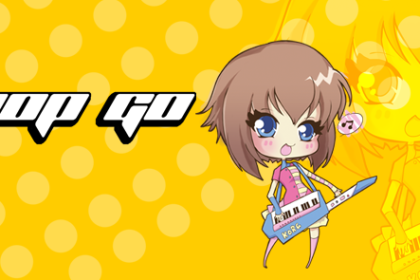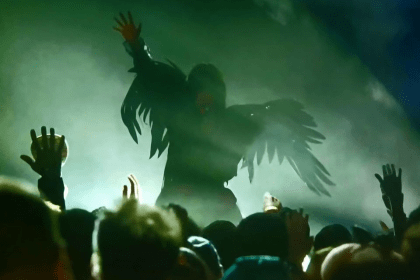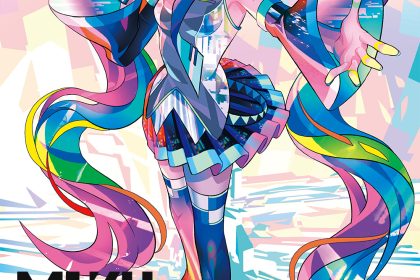Combining a variety of styles and influences, Unshin features members from Taiwan, Korea, England and Japan. Singer Megumi Miyoshi (originally from Sendai, Japan) was a professional koto player before the band was formed.
Their debut album Waltz for Broken Dolls was released in July 2011 and tells the story of a young girl battling against the restraints of society. The band performed live at Ayacon 2011 where J-Pop Go was able to ask a few questions.
Can you tell me about the inspiration behind the name Unshin?
In Japanese it means ‘cloud heart’ but we didn’t actually take it from the meaning. Meg plays koto as a professional and has been playing since she was 7. She got this professional name to play and that’s ‘Unshin’ so we took her name for the band.
What are your thoughts on playing Anime Conventions?
Definitely enjoy them. It’s really friendly so everyone is very supportive about your music and your performance and you can see everybody the next day and say “Hello!” *laughs* It’s been really great.
When people come in something like cosplay people are just more relaxed and it creates a lovely friendly atmosphere which is just really nice. The first one we’ve been to was London Anime Con and it was exactly the same thing there. People are really friendly and relaxed.
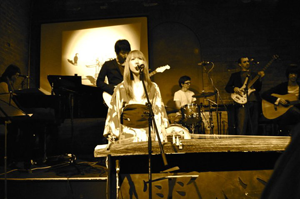
Have you played any gigs outside of the UK?
Our official gigs have been in the UK so far. We’ve done one gig in Japan as a 3-piece and then we’ve done one in Greece but it wasn’t our whole set, we just did 3 tracks.
Can you tell me a little about the inspirations behind the album Waltz for Broken Dolls?
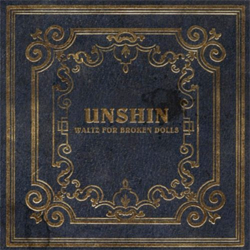
It’s a concept album that tells the story of a young girl growing up in a strict society where everyone is forced to be the same, you’re not allowed to be different or express yourself really well. But this girl in the story is trying to find herself as an individual and then trying to tell everybody that’s what you can do if you wanted to.
Meg has been writing this album, lyrics-wise, since she was 13 or 14 but didn’t actually have a story to it. So Meg started writing lyrics, particularly to fit the story concept of the track. She wasn’t writing the story about herself or anyone else, but was imaging how it would be like in that kind of life. But realised later on, looking back on her own life “This could be about myself or anybody”.
What’s the writing process for the music to begin with?
Messy! *laughs* When Meg first started bringing the lyrics they’re very, very atmospheric. It’s very easy to get the feeling of what is going on in her lyrics. It’s very easy to capture the moment that she’s trying for.
So when we first started writing it, the feeling that the lyrics gave us was what inspired us for the music. So we weren’t thinking ‘we’re a rock band’, we weren’t thinking a specific genre.
For example Temporary Relief is the first track that Meg wrote. It’s about a girl who’s quite restrained, she’s quite angry because there’s lots around her that are trying to model her and lead her in ways that her body or herself doesn’t necessarily want to go. And there’s sort of a moment where she goes into her room and the atmosphere of that room and the tension of it is really well captured. So for us it really was writing music to the feel of that. It’s quite edgy. There’s an acoustic guitar on it but it’s played roughly.
Pretty much the whole album worked very similar in that kind of way and when Meg would bring a track and a certain kind of style of lyrics, we would then capture the feeling of that and we wouldn’t be thinking to do a certain thing or keep it all the same or anything like that, we were just thinking ‘What fits that the most? How musically would we try to express that?’ Which gives the whole album quite a lot of dynamics and some people would say almost slightly messy. But at the same time that’s deliberately part of it. We really like the way we throw into these different types of music without worrying about it. So they’re designed to capture the emotions.
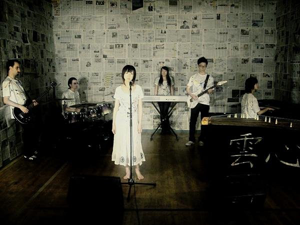
Can you talk a bit about your stage presentation work with the animator Mai Yoshida and how that collaboration came about?
She’s a good friend of ours basically and we really liked the way that she did stuff. I think that when we started on the idea of doing a concept album, one of the things that we really liked about the idea was that we can lock in other bits of media. Ideally we’d love to have a graphic novel to be done because the story is very, very clear, it’s very workable, it’s a lovely story as well.
Obviously we knew her style quite well so then we decided to go ahead with doing it. But I like the dynamics of the way she works. When looking back at the animations of what she did it’s not necessarily ‘Anime’ style, it kind of moves around a lot. She uses a lot of video. She almost entered into it the same way we did, looking at the track and thinking ‘Well how am I going to capture that?’. Sometimes it was with drawings, sometimes it was a mixture of the two.
Did you do visuals for all the tracks that you do for the stage performance?
Yeah so basically it’s a 13-track album and she did 12 animations. There’s one track at the very end on which Meg plays the piano, it’s just a small piano part just to end the whole sequence and there isn’t an animation for that. But for everything else there’s an animation. They range in length between I’d say a minute to a minute and a half and two minutes. They don’t fill out a whole song. It shows a bit of an animation then it might just go to black for the rest of the song or it shows a bit of animation, goes black for a bit and then comes back again or it just loops it, depending again on what fits the track the most.
J-Pop Go gives grateful thanks to Unshin, and also to the team at Ayacon 2011.
Waltz for Broken Dolls is available from Amazon.

